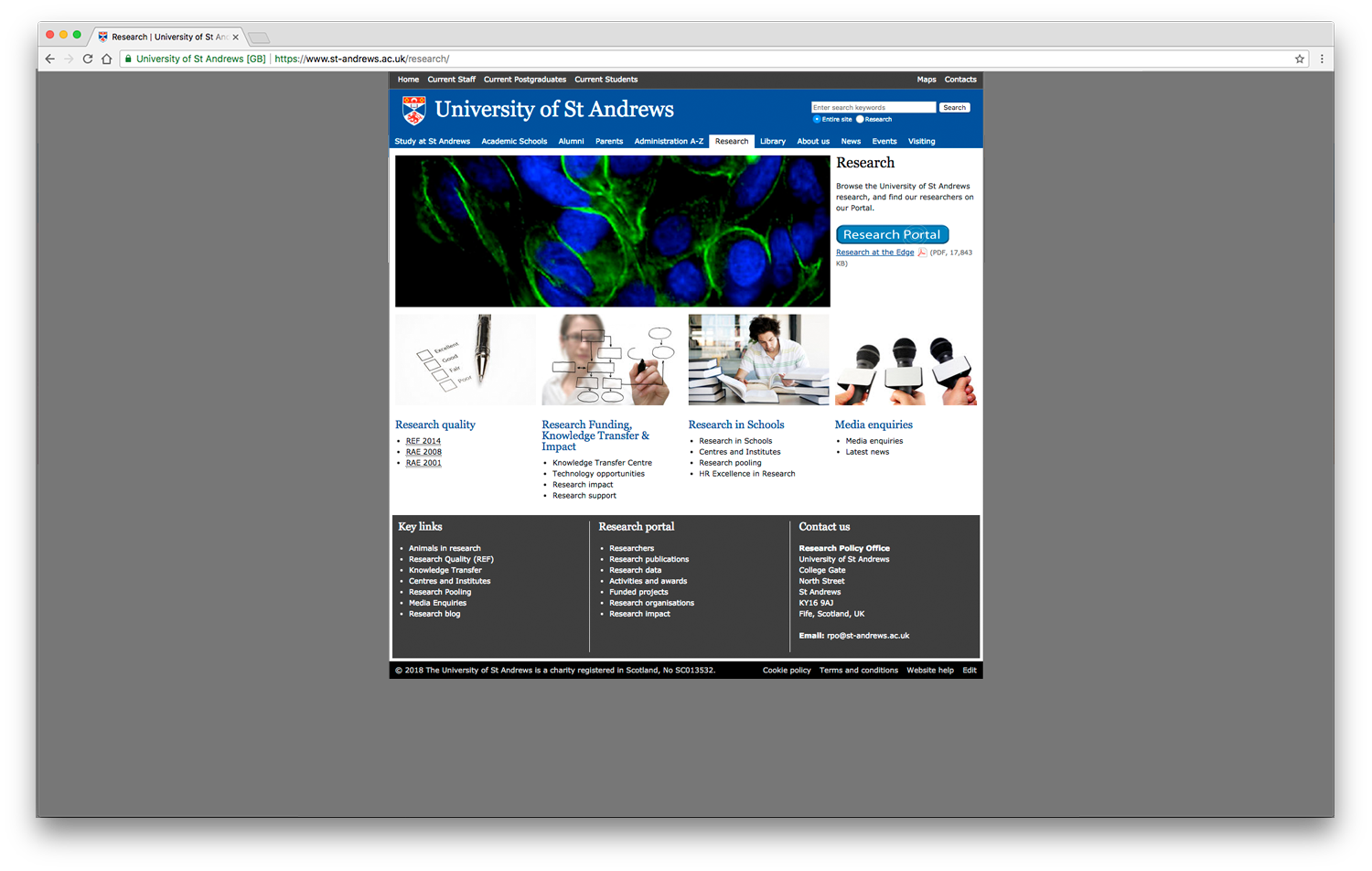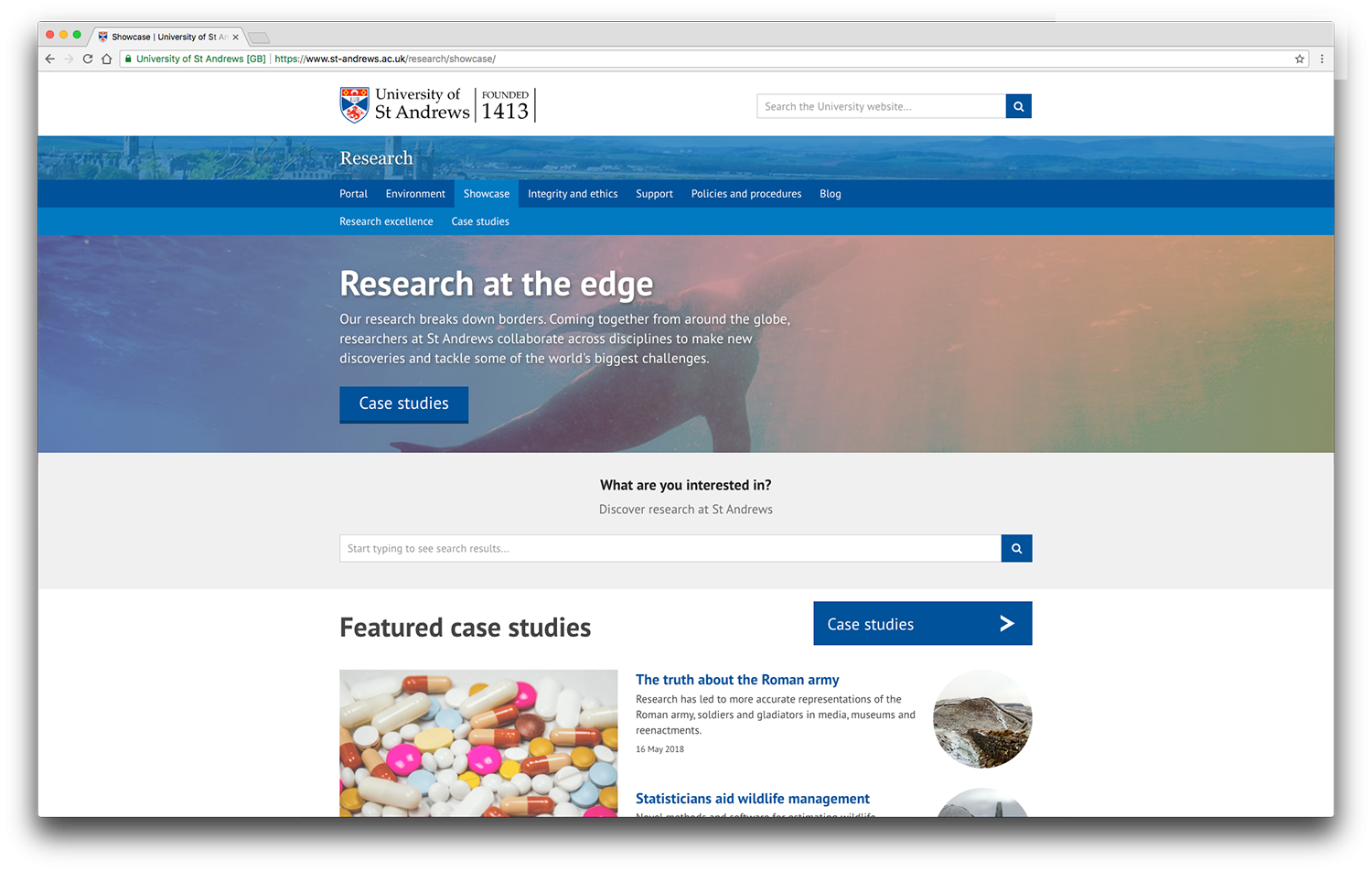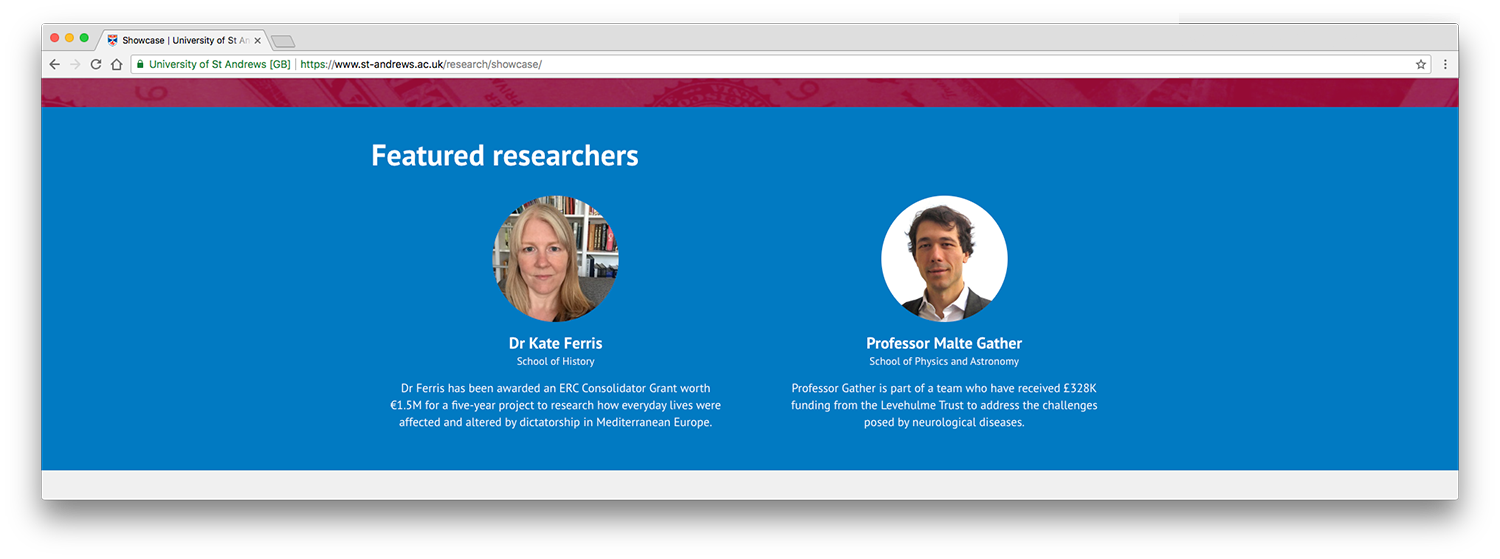The new research pages are live
On Thursday 7 June 2018, the digital communications team launched new research webpages to showcase the University’s world-class research outputs, research impact, and the excellent research environment at St Andrews. This post looks at some of the changes we’ve made to the research section.
What’s new?
The first thing you’ll notice if you’re a frequent visitor to the research section is the new homepage. The new homepage features some new patterns, colours and content. Here’s what the site looked like before:
And here’s what it looks like now.
The visual benefits of this change are clear to see, but the big advancement is the fact that the site is now responsive and can be viewed easily on mobile devices.
Some new things to look out for on the research homepage include:
Search bar
Using the search bar, a user will be able to find results from Pure, the new Research blog, case studies and the long-forms. As the user begins the search, a drop-down with some options appears.
Panel grid
The panel grid was a great option to display a collection of links relating to a certain topic, for example ‘Research portal’. The pattern also adds some colour to the page, breaking up the traditional blue-tone palette that has been used throughout the new style pages in the past. You can read more about the University’s updated corporate colours in Lewis Wake’s blog post on the subject.
Featured case studies
This new pattern was designed to showcase the ten case studies that the content team wrote for the launch of the new site. The pattern allows for one case study to be prominently featured, and the other latest three to appear alongside it. This pattern uses circular images which have not been seen in the new site styling before. Users are directed to read more case studies via a clear navigational button.
Research news
The tile grid at the end of the research homepage isn’t a new pattern, but this feature does now provide a source of up-to-date research news for users, which was missing from the previous version of the research website. These research-specific news items are automatically pulled through from the new News site, which was also launched on Thursday 7 June 2018. Fun times!
Research showcase
The research showcase section is an area of the research website which can be used to draw attention to some of the amazing research that takes place here. The showcase houses a new Research blog and is a platform to promote new research case studies and long-forms.
Some new and interesting features to look out for on this page are:
Research highlights (the Showcase banner)
This section is great for demonstrating the University’s accolades, and through iconography and text we can direct the user to the source of these statements to find out more. The Showcase banner pattern is also a good opportunity to add some colour to the page and to contrast with the adjacent sections.
Featured researchers
The Featured people pattern also includes a circular element and a small yellow highlight appears when you hover over each researcher, letting users know that the image can be clicked on. This section can be used to showcase any researchers from across the University and the sections will link through to their Pure profile, or a particular news release. A small blurb helps paint a picture of who they are and what they have achieved.
Research blog
The new Research blog is an opportunity for Schools and Departments within the University to share all of the interesting research projects that are happening with readers. The blog posts that populate the blog were sourced from several research-related blogs but are now all in one place. Digicomms hope the blog will be used by members of staff around the university to share all of the interesting goings on in research at St Andrews.
Case studies
A new case studies landing page acts as a directory for all of the case studies we have written so far. It is currently organised by theme, including Environment, Culture etc, but these are flexible and new themes can be added if necessary. The individual case study pages are largely based on the styling we use on the long-forms, though they are significantly shorter and feature far fewer media items throughout. It is also worth mentioning that the current case studies are based on the 2014 REF case studies, however digital communications see no problem featuring research that is separate from this parameter.
For a few weeks after launch, there will be a feedback form on the new research homepage if you want to provide some feedback. If you notice any bugs, broken links or issues, please alert digital communications by emailing [email protected].



